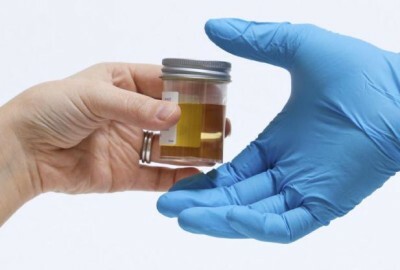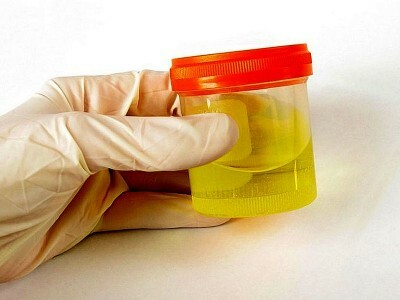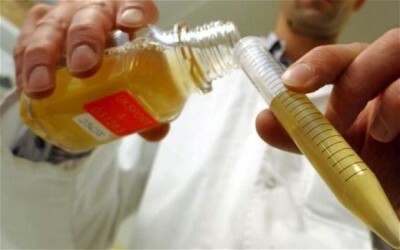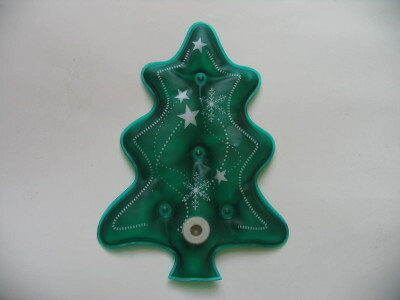1 It's important to know!
Urinary diastase is the kind of analysis that can detect and diagnose a lot of disorders occurring in the human body. The fact that quite a few diseases affect this enzyme, as a result of which its quantity increases or decreases. This can occur both in acute forms of the disease, and in chronic.

We recommend to read
- How much is the biochemical blood test
- How to take the bilirubin assay
- Preparing for stomach gastroscopy in the morning
- Effective remedy for gastritis and stomach ulcer
In most cases, this analysis is used to confirm the fact of peptic ulcer, colitis or appendicitis. But it is important to remember that it is not necessary to diagnose the disease yourself, because similar symptoms can appear with ectopic pregnancy or abdominal trauma, and each ailment requires specialist intervention.
2 Increasing and lowering the norm
Departure from the norm may indicate not only about pancreatitis, but also about a number of other pathologies that occur in the body. This applies to those types of diseases that affect the abdominal cavity. The most common ailments are peritonitis and cholecystitis. In some cases, increased diastasis can be the result of taking some medications. Most often this occurs after the use of adrenaline, tetracycline, NSAIDs and antitumor agents. In addition, it can be attributed as a provocateur and alcohol poisoning, the adoption of opium drugs and artificial abortion.
The rise of diastase in urine often notifies about diabetes, but the blood test will show an increased level of glucose. This indicator departs from the norm at least 2 times. Although with pancreatitis it is perfectly normal, if glucose is in the urine.
By the way, pancreatitis and diabetes mellitus are exactly those ailments in which the pancreas primarily affects. Therefore, in order for the diagnosis to be correct, it will be necessary to conduct not only an analysis of urine for diastasis, but also apply a comprehensive examination for the completeness of the entries.
-
 IMPORTANT TO KNOW! Gastritis? Ulcer? To have a stomach ulcer not turned into cancer, drink a glass. ..Read the article & gt; & gt;
IMPORTANT TO KNOW! Gastritis? Ulcer? To have a stomach ulcer not turned into cancer, drink a glass. ..Read the article & gt; & gt;
Renal failure may also be detected by analysis for diastasis. But in addition, you need to identify the level of creatinine and urea. If you do not pay attention to these factors, then the disease can be established incorrectly.
And finally, the inflammation of the salivary glands. Mumps in this area include parotitis and sialadenitis. With them, the level of diastase rises slightly, so at first glance, the pathology may not be detected.

During analysis, the level of diastase may be decreased. This pathology occurs in chronic pancreatitis. Thus, the indicators will be equal to 16 units. This disease contributes to the lack of enzyme-forming function.
Decrease occurs and at a time when the body has one of the forms of hepatitis. In addition to the acute and chronic form of such a disease, a decrease in the level of diastase can be affected by toxicosis in the early months of pregnancy.
The norm of diastase in a child is somewhat different. In the case of children, the diagnosis process becomes somewhat more complicated. Therefore, experts carefully study all the results obtained and pay attention to the concentration of diastase in the urine taken for analysis. Currently, doctors set a standard of 10 to 64 units. If the level varies within these limits, then the child can be considered healthy, at least in the order of his pancreas. Accordingly, an increase in diastase is a sign of problems. Often in children with such tests, the following diseases are observed: kidney failure and diabetes mellitus. If the level opposite is lowered, then the body has such diseases as colitis, pancreatitis, ulcer or appendicitis.
-
 Gastroenterologist. VAZHENOV: "I beg you, if you began to worry about abdominal pain, heartburn, nausea, do not do gas in any way. .."Read more & gt; & gt;
Gastroenterologist. VAZHENOV: "I beg you, if you began to worry about abdominal pain, heartburn, nausea, do not do gas in any way. .."Read more & gt; & gt;
In children, the norm can be detected only by laboratory examination of the material, as each organism has its own characteristics that affect the level of diastase. But it is important to remember that each laboratory has different units that measure the norm, so you need to consult with specialists. Only they can decipher all the results and symptoms. The doctor compares all the data and makes a conclusion on this background.
3 How to assemble material for analysis of
If there is any suspicion of the acute form of pancreatitis, the specialist directs the patient to the laboratory where the material for urine analysis is taken. To do the research, you need only a couple of milliliters, but only in fresh condition. If the urine stagnates, the diastase is quickly destroyed. Therefore, such material is not suitable for research and the results can not be considered reliable.
ADVICE FROM THE MAIN GASTROENTEROLOGIST
Korotov SV: "I can recommend only one remedy for the rapid treatment of Ulcer and Gastritis, which is now recommended by the Ministry of Health. .." Read the reviews & gt; & gt;
With scheduled testing or in the case of patients with suspicion of pancreatitis, the material for analysis is taken in the morning. After that, urine is immediately delivered to the laboratory. Most often this procedure is performed on an empty stomach with pure urine.

For more in-depth testing and to reveal the dynamics of the inflammatory process that occurs in the pancreas area, a specialist is assigned daily monitoring. This procedure involves the delivery of material for analysis every 3 hours. It is performed in the acute form of pancreatitis. The method itself is inexpensive, although its informativeness is quite high. The collection of material is not complicated, so this is the most important way of diagnosing diseases.
The fact is that the pancreas is responsible for the metabolic process and, as a consequence, it releases pancreatic juice containing diastase.
In some cases, a whole complex of examinations is prescribed, but this only occurs when there are certain symptoms that may indicate that inflammatory processes in the pancreas are occurring in the body.
The study course includes a general urine test and a biochemical blood test. Since the blood contains amylase, the study indicates its number. Only in the event that there are deviations in one direction or another, the disease can be diagnosed.
4 How is the diagnosis?
As it was mentioned earlier, in children the norm of diastase in the blood is from 10 to 64 units, while in adults this mark can reach 128. In any case, if there are even slight deviations from the norm, this is a sure sign of the presence of problems in the body. It is important to remember that these figures are general indicators, but for each they are individual, so the norm is set for each patient individually. If the pancreatic duct is in a clogged state for a long time, then the volume of diastase, on the contrary, decreases. The complete absence of this enzyme in the urine may indicate renal failure.
In order to determine the level of diastase in the laboratory, additional reagents will be required. Thus, to determine correctly, toluene, 0.85% physiological saline solution, starch solution and phosphate buffer solution are required.

So, first you need to warm up the physiological solution. And this will require about 70 ml, which must be brought to a boil. Next, another test tube is taken, into which it is necessary to pour 3 ml of the same solution and mix it with a gram of starch. The ingredients are thoroughly mixed with a special glass rod. To continue the analysis, it is required that the resulting mixture be poured into the boiling solution and mix thoroughly. The used tube is rinsed several times with saline solution, which is poured into the same boiling mixture. After the product has cooled down, it is placed in a special 100 ml flask, and the saline must be added only to the mark.
Next, it is necessary to dilute the starch with saline solution, in the end, 90 ml should go out.10 ml of toluene and the same buffer solution are added thereto. In the absence of a phosphate buffer, the agent will only be suitable for a few days, if it is, the solution can be used within 90 days.
In order to conduct the analysis, you will need to use iodine solution.
This solution is very easy to prepare. In a volumetric flask you need to pour 20 ml of iodine and 80 ml of water. In the absence of iodine, Lugol's solution is sometimes used.
So, in the laboratory specialists install 15 tubes at a time, in 14 of them there is a milliliter of saline solution. In 1 and 2, the material taken for analysis is placed, which is mixed with the contents of the tube. Then, from 2 to 3, a milliliter of contents is poured and again everything is thoroughly mixed. Further, this procedure continues on the same principle, and the content is transferred in the same proportions, up to 15 tubes. From the last milliliter of contents poured, so that in each tube there was the same amount of material. This dilution is carried out in every second test tube, that is, in 2, 4, 8, etc.
5 Interpretation of results
To continue the study, 2 ml of a starch solution is poured into all tubes and they are left in the stand for about 15 minutes, where a water bath with a temperature of 45 degrees is arranged for the materials. At the end of this time, the tripod will need to be placed in cold water so that the enzyme action ends.
Then iodine solution is added to the test tubes, after which observation is carried out. As a result, the content should change the color to yellow, blue, red or red-blue. And the color should disappear within a few minutes, if it happens faster, then add 1 more drop of iodine.
Then the decryption takes place. If the content becomes blue, this is a sure sign that there is no diastatic effect. In this case, you must take the previous test tube, which it ended. If, for example, there is undigested starch in test-tube # 6, then 5 tubes are taken. It is in it there is a dilution in proportions 1 to 16 and there is no blue tint. Thus, in such an amount of content, 2 ml of starch is digested. In this case, 32 ml of starch should be digested in 1 ml of urine. From this result is obtained. Diastase is indicated by the letter d. By the results of the above actions, it appears that the level of diastase is 32 units and does not go beyond the norm.
- 1 Important to know!
- 2 Increase and decrease in the
- 3 standard How to assemble the material for the
- 4 analysis How is the diagnosis carried out?
- 5 Decryption of results
Urinary diastase is a fairly common pathology. In medicine, a more common name is amylase. Basically, this enzyme is formed in the region of the salivary and pancreatic glands. A characteristic feature of this pathology is the cleavage of complex carbohydrates to simple ones, that is, the transformation of starch into glucose. The level of diastase, which is contained in the urine, determines the degree of inflammation occurring in the pancreas. Thus, elevated indicators are a strong sign of acute and chronic pancreatitis. Under normal conditions, the indices will be 64 units, but if the body develops pancreatitis, then they can reach 16,000.
Do you have gastritis?
GALINA SAVINA: "How easy is it to cure gastritis at home for 1 month. A proven method is to write down a recipe. ..!"Read more & gt; & gt;



